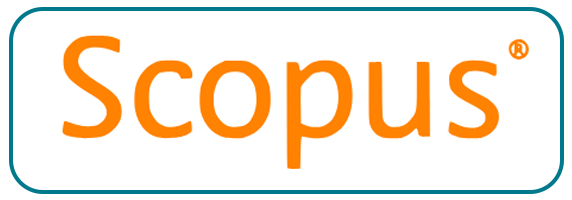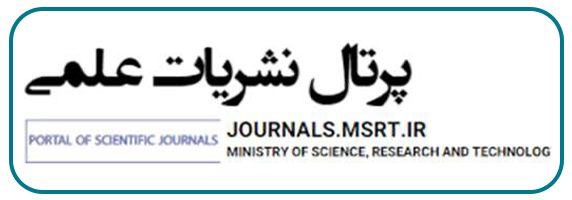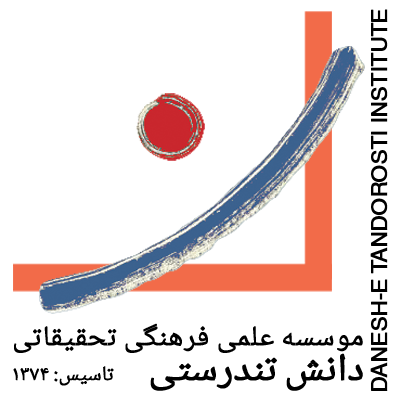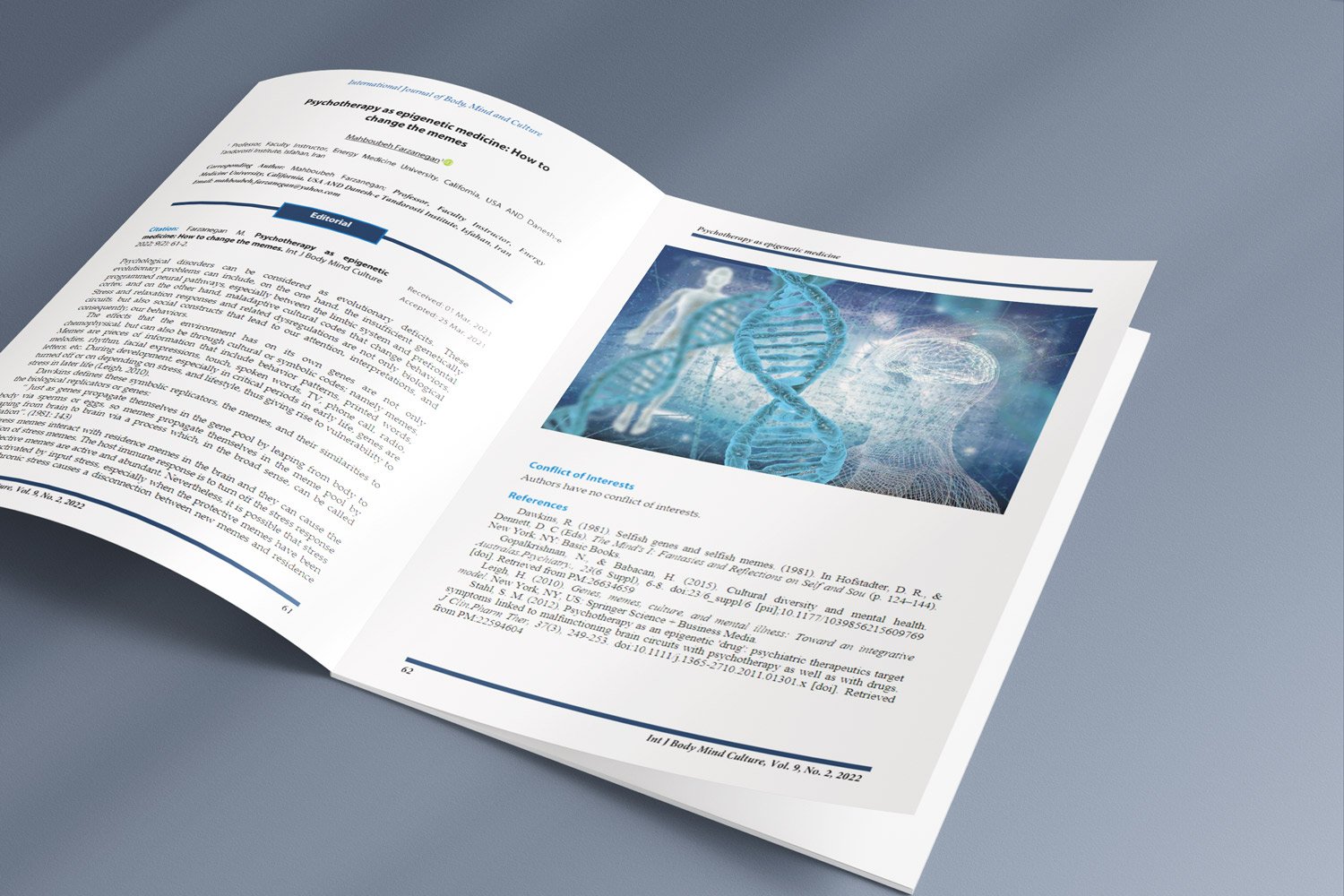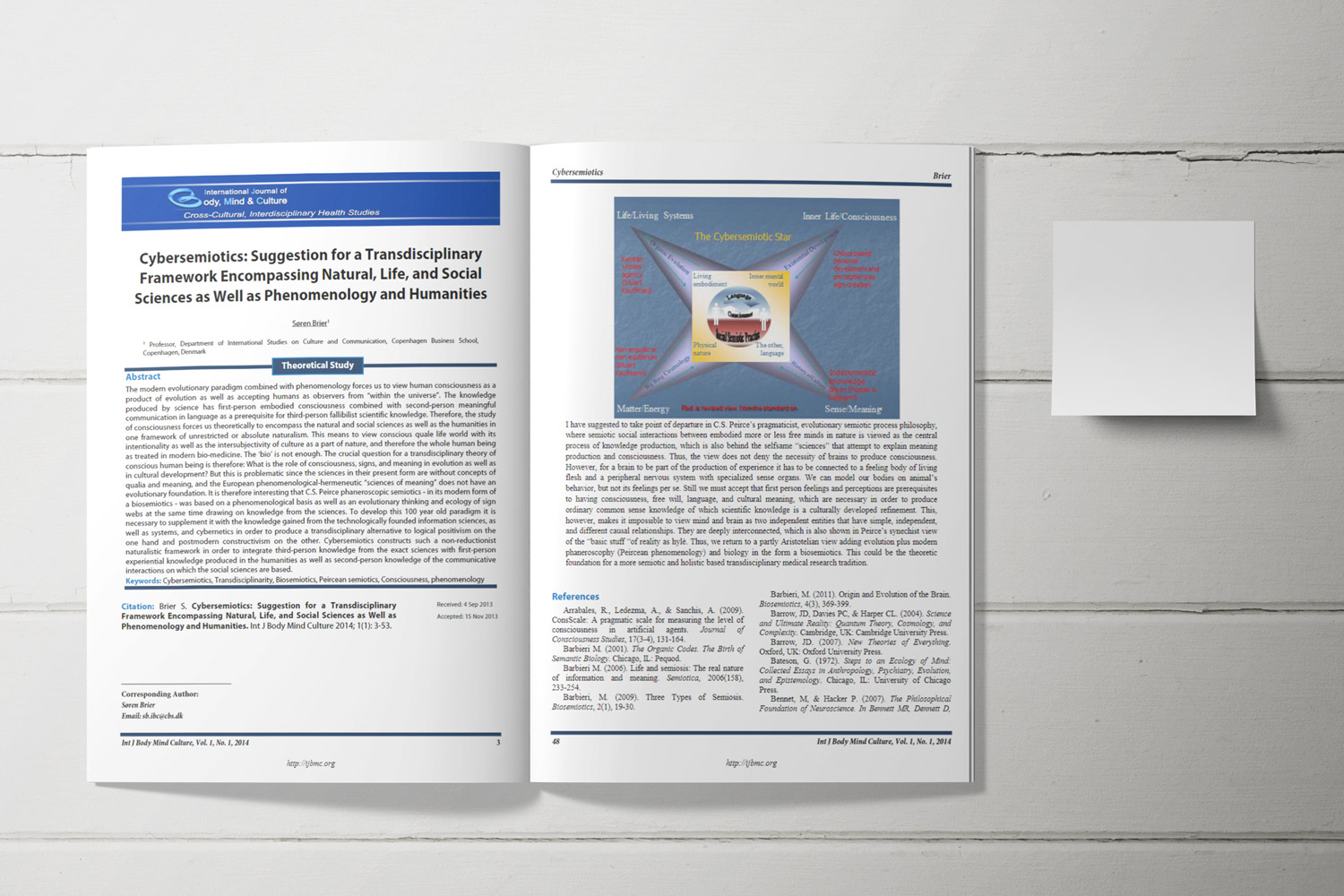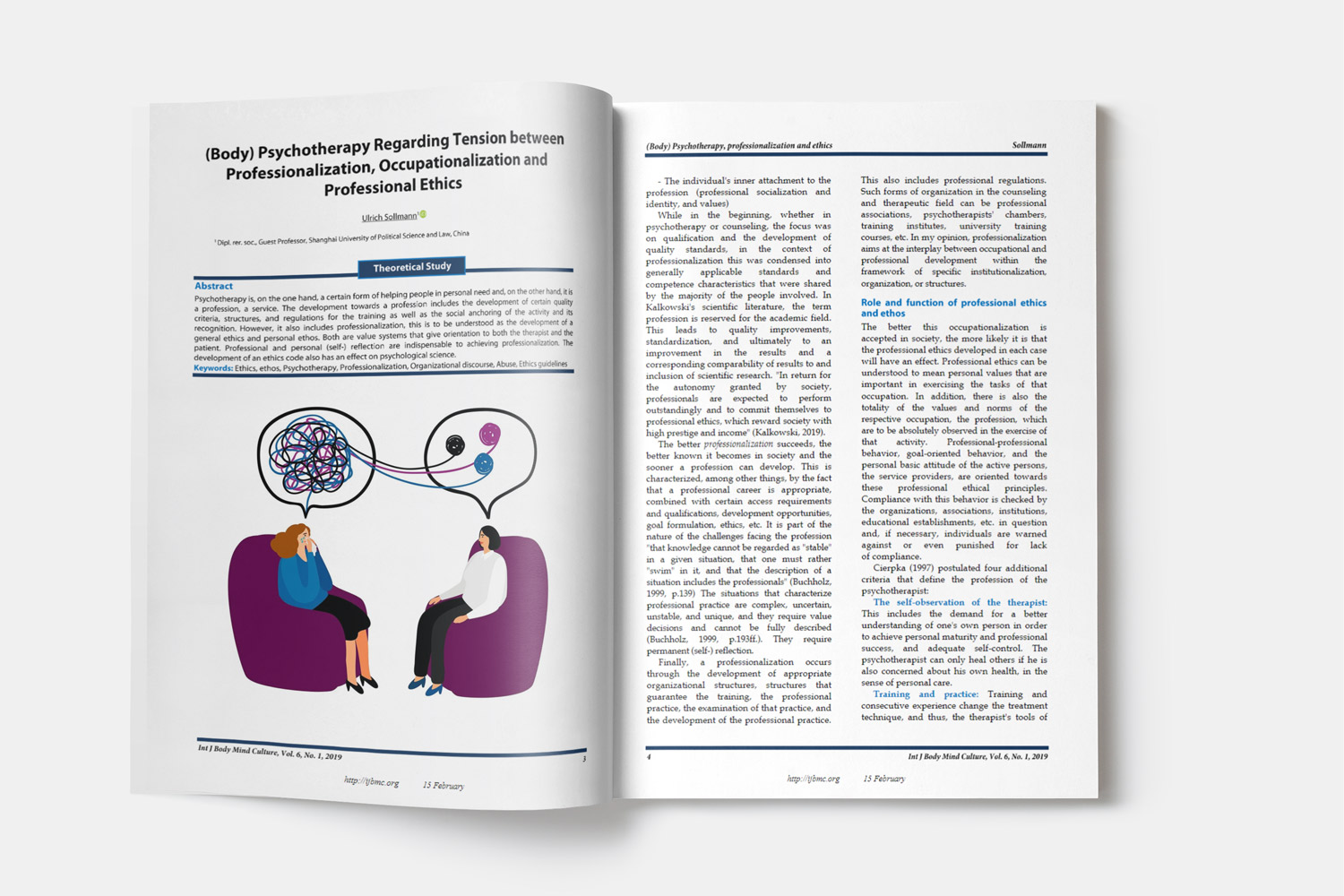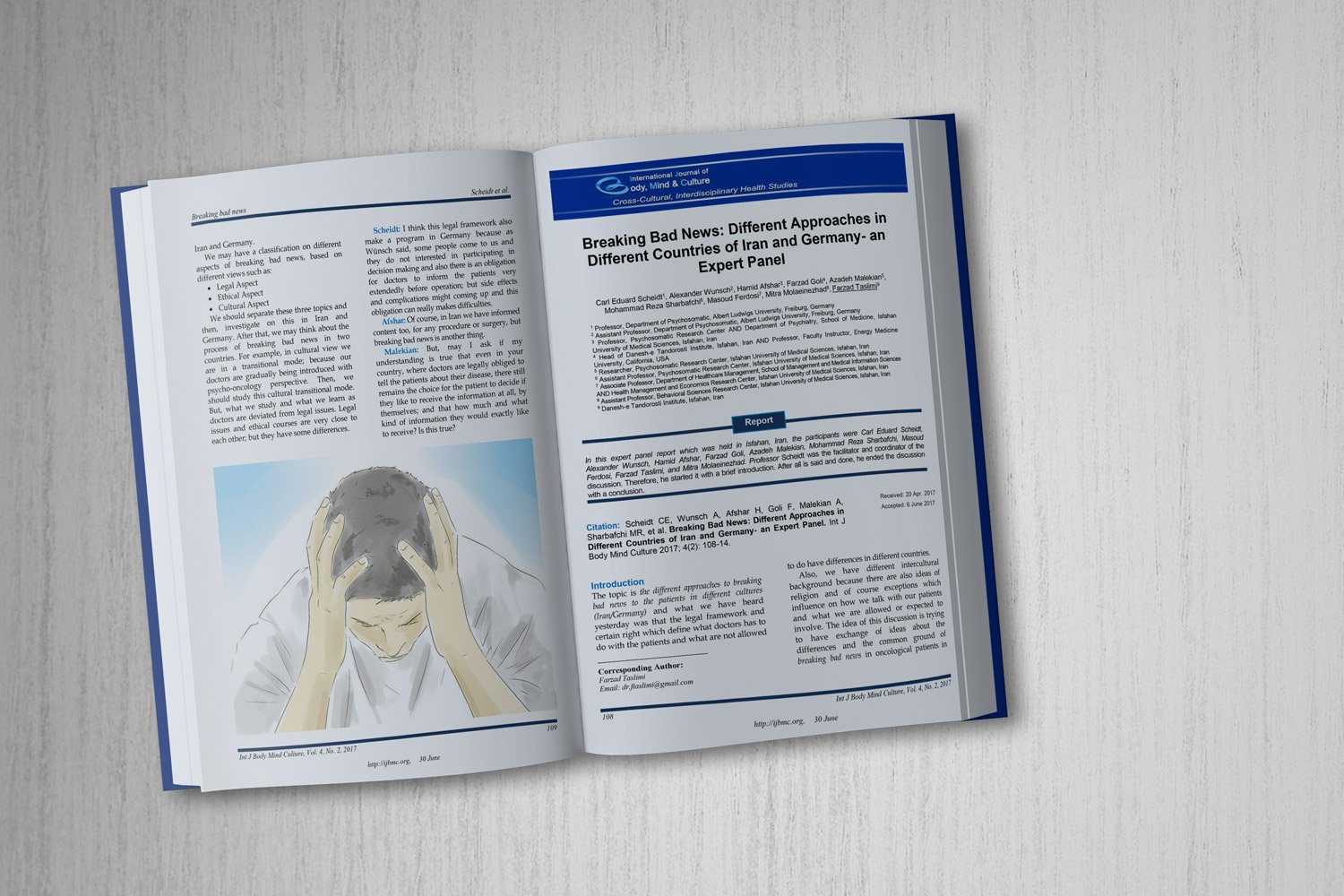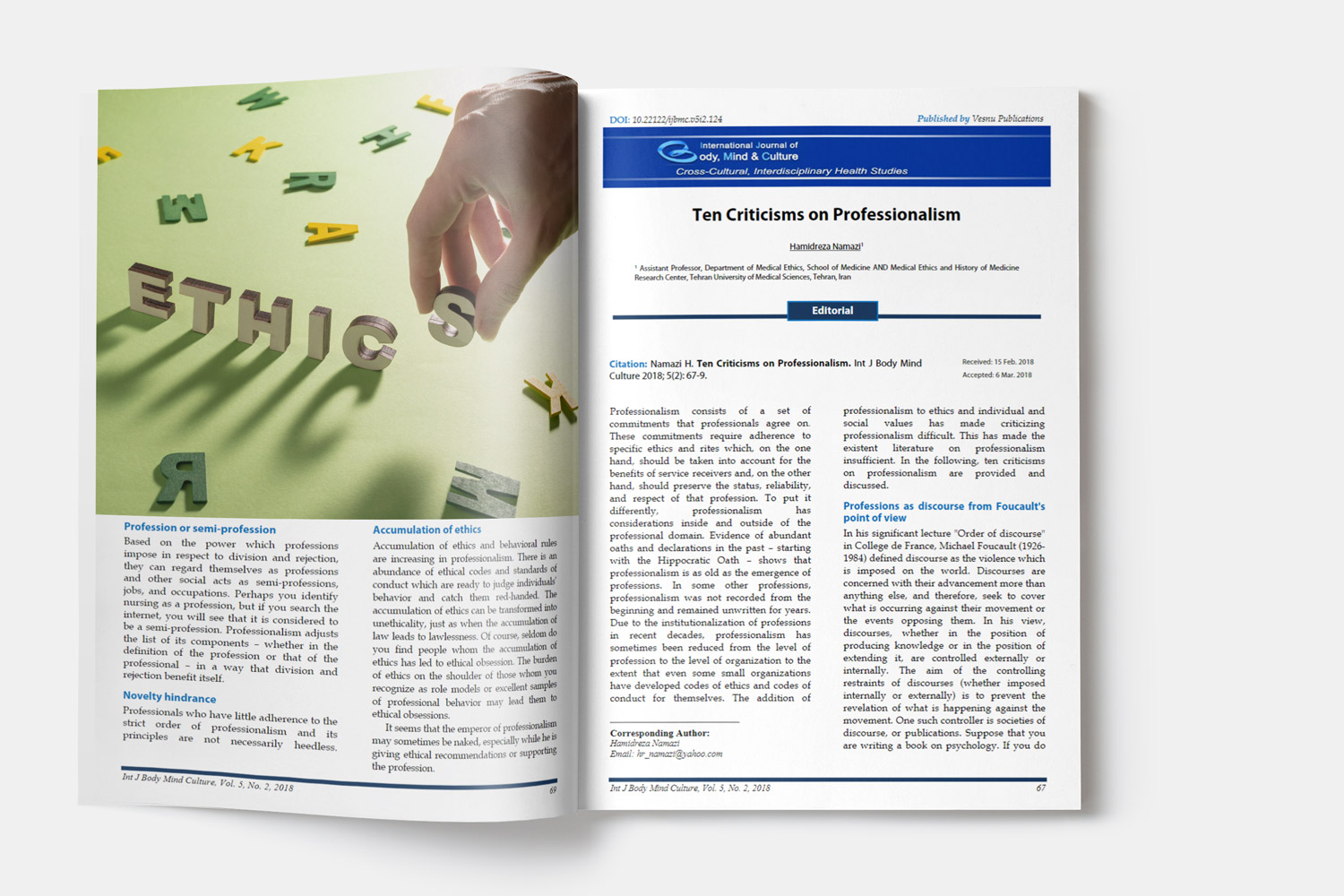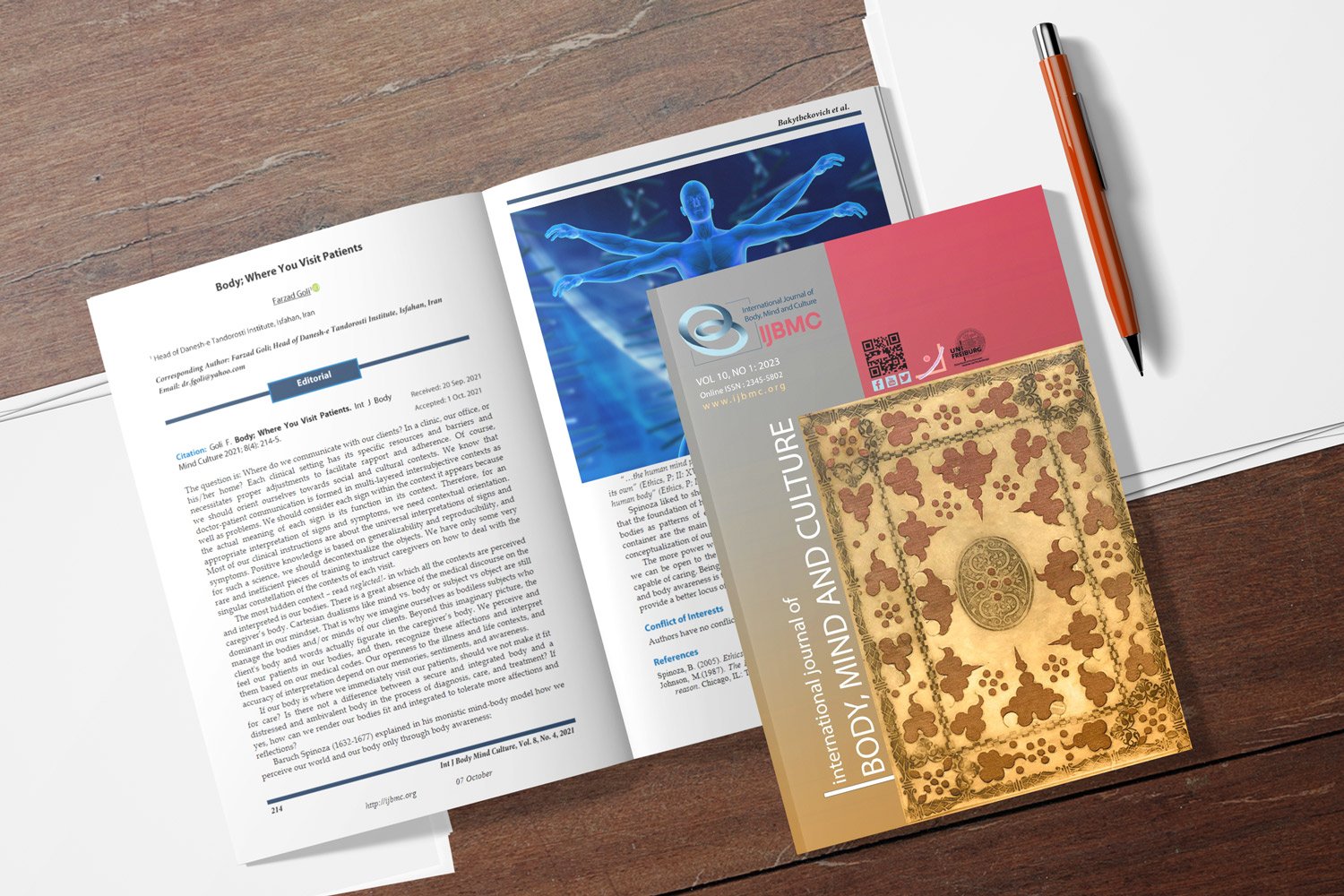Cross-Cultural Adaptation of the Physical Appearance Comparison Scale-Revised in Iran
Downloads
Background: The comparison of physical appearance may play an important role in many body-related variables. The Physical Appearance Comparison Scale-Revised (PACS-R) is a recently developed instrument for measurement of physical appearance comparisons in a number of contexts. The aim of the present study was to validate the Persian version of this scale.
Methods: The scale was administered following a standard back-translation procedure. The sample consisted of 206 female university students. The Body Appreciation Scale (BAS), Life Orientation Test (LOT), Interest in Aesthetic Rhinoplasty Scale (IARS), and Body Mass Index (BMI) were used for assessment of concurrent validity. The factor structure of the scale was investigated using exploratory factor analysis (EFA). Analysis of variance (ANOVA), bivariate correlation coefficients, and one-sample t-test were used in SPSS software for statistical analysis. Effect sizes were also computed in comparisons between the Iranian sample and the American sample on which the scale was developed. Moreover, the reliability of the scale was evaluated using Cronbach's alpha.
Results: All items had adequate psychometric qualities in item analysis. The instrument was internally consistent (alpha = 0.97) and one-dimensional. It was positively correlated with BMI and interest in aesthetic rhinoplasty. Furthermore, PACS-R was inversely associated with optimism and body appreciation. Cross-cultural comparisons suggested that Iranian female participants had lower scores in physical appearance comparison.
Conclusion: The Persian version of the PACS-R is a reliable and valid psychometric scale and may be used in clinical and research settings.
Downloads
Abdollahi, P., & Mann, T. (2001). Eating disorder symptoms and body image concerns in Iran: comparisons between Iranian women in Iran and in America. Int J Eat.Disord., 30(3), 259-268. doi:10.1002/eat.1083 [pii]. Retrieved from PM:11746285
Ahern, A. L., & Hetherington, M. M. (2006). The thin ideal and body image: an experimental study of implicit attitudes. Psychol Addict.Behav, 20(3), 338-342. doi:2006-10832-014 [pii];10.1037/0893-164X.20.3.338 [doi]. Retrieved from PM:16938073
Akiba, D. (1998). Cultural variations in body esteem: how young adults in Iran and the United States view their own appearances. J Soc Psychol, 138(4), 539-540. doi:10.1080/00224549809600409 [doi]. Retrieved from PM:9664869
Alipour, B., Abbasalizad, F. M., Dehghan, P., & Alipour, M. (2015). Body image perception and its association with body mass index and nutrient intakes among female college students aged 18-35 years from Tabriz, Iran. Eat.Weight.Disord.. doi:10.1007/s40519-015-0184-1 [doi]. Retrieved from PM:25701442
Atari, M., Akbari-Zardkhaneh, S., Mohammadi, L., & Soufiabadi, M. (2015). The factor structure and psychometric properties of the Persian version of body appreciation scale. American Journal of Applied Psychology, 3(3), 62-66. doi: 10.12691/ajap-3-3-3. Retrieved from http://pubs.sciepub.com/ajap/3/3/3. Retrieved from Science and Education Publishing.
Avalos, L., Tylka, T. L., & Wood-Barcalow, N. (2005). The Body Appreciation Scale: development and psychometric evaluation. Body Image., 2(3), 285-297. doi:S1740-1445(05)00054-9 [pii];10.1016/j.bodyim.2005.06.002 [doi]. Retrieved from PM:18089195
Bagheri, M., & Mazaheri, M. (2015). Body image and quality of life in female patients with breast cancer and healthy women. Journal of Midwifery and Reproductive Medicine, 3(1), 285-292.
Bailey, S. D., & Ricciardelli, L. A. (2010). Social comparisons, appearance related comments, contingent self-esteem and their relationships with body dissatisfaction and eating disturbance among women. Eat.Behav, 11(2), 107-112. doi:S1471-0153(09)00133-0 [pii];10.1016/j.eatbeh.2009.12.001 [doi]. Retrieved from PM:20188294
Boroughs, M., Krawczyk, R., & Thompson, J. K. (2010). Body dysmorphic disorder among diverse racial/ethnic and sexual orientation groups: prevalence estimates and associated factors. Sex Roles, 63(9-10), 725-737. Retrieved from http://dx.doi.org/10.1007/s11199-010-9831-1. Retrieved from Springer US.
Brechan, I., & Kvalem, I. L. (2015). Relationship between body dissatisfaction and disordered eating: mediating role of self-esteem and depression. Eat.Behav, 17, 49-58. doi:S1471-0153(14)00180-9 [pii];10.1016/j.eatbeh.2014.12.008 [doi]. Retrieved from PM:25574864
Buunk, A. P., & Gibbons, F. X. (2007). Social comparison: The end of a theory and the emergence of a field. Organizational Behavior and Human Decision Processes, 102(1), 3-21. Retrieved from http://www.sciencedirect.com/science/article/pii/S074959780600094X
Carlson, J. D. (2004). Body image among adolescent girls and boys: a longitudinal study. Dev Psychol, 40(5), 823-835. doi:10.1037/0012-1649.40.5.823 [doi];2004-17950-015 [pii]. Retrieved from PM:15355169
Carver, C. S., Scheier, M. F., & Weintraub, J. K. (1989). Assessing coping strategies: a theoretically based approach. J Pers.Soc Psychol, 56(2), 267-283. Retrieved from PM:2926629
Cash TF, & Smolak L. (2012). Body image: A handbook of science, practice, and prevention (2nd ed.). New York, NY: The Guilford Press.
Cattell, R. B. (1966). The scree test for the number of factors. Multivariate Behavioral Research, 1(2), 245-276.
Dakanalis, A., Zanetti, A. M., Riva, G., Colmegna, F., Volpato, C., Madeddu, F. et al. (2015). Male body dissatisfaction and eating disorder symptomatology: moderating variables among men. J Health Psychol, 20(1), 80-90. doi:1359105313499198 [pii];10.1177/1359105313499198 [doi]. Retrieved from PM:23988683
Davison, T. E., & McCabe, M. P. (2006). Adolescent body image and psychosocial functioning. J Soc Psychol, 146(1), 15-30. doi:10.3200/SOCP.146.1.15-30 [doi]. Retrieved from PM:16480119
Davison, T., & McCabe, M. (2005). Relationships between men's and women's Body Image and Their psychological, social, and sexual functioning. Sex Roles, 52(7-8), 463-475. Retrieved from http://dx.doi.org/10.1007/s11199-005-3712-z. Retrieved from Kluwer Academic Publishers-Plenum Publishers.
Donyavi, V., Rabiei, M., Nikfarjam, M., & Nezhady, B. M. (2015). Body image and meta-worry as mediators of body dysmorphic disorder. International Journal of Clinical Medicine, 6(3), 170-176. DOI: 10.4236/ijcm.2015.63022.
Dunn, J., Lewis, V., & Patrick, S. (2010). The Idealization of Thin Figures and Appearance Concerns in Middle School Children. Journal of Applied Biobehavioral Research, 15(3), 134-143. Retrieved from http://dx.doi.org/10.1111/j.1751-9861.2010.00057.x. Retrieved from Blackwell Publishing Inc.
Fardouly, J., Diedrichs, P. C., Vartanian, L. R., & Halliwell, E. (2015a). Social comparisons on social media: the impact of Facebook on young women's body image concerns and mood. Body Image., 13, 38-45. doi:S1740-1445(14)00148-X [pii];10.1016/j.bodyim.2014.12.002 [doi]. Retrieved from PM:25615425
Fardouly, J., Diedrichs, P. C., Vartanian, L. R., & Halliwell, E. (2015b). The Mediating Role of Appearance Comparisons in the Relationship Between Media Usage and Self-Objectification in Young Women. Psychology of Women Quarterly. Retrieved from http://pwq.sagepub.com/content/early/2015/04/10/0361684315581841.abstract
Festinger, L. (1954). A theory of social comparison processes. Human Relations, 7(0117), 140. http://dx.doi.org/10.1177/001872675400700202.
Fitzsimmons-Craft, E. E., Bardone-Cone, A. M., & Harney, M. B. (2012). Development and validation of the Body, Eating, and Exercise Comparison Orientation Measure (BEECOM) among college women. Body Image., 9(4), 476-487. doi:S1740-1445(12)00093-9 [pii];10.1016/j.bodyim.2012.07.007 [doi]. Retrieved from PM:22902098
Frederick, D. A., Lever, J., & Peplau, L. A. (2007). Interest in cosmetic surgery and body image: views of men and women across the lifespan. Plast Reconstr.Surg, 120(5), 1407-1415. doi:10.1097/01.prs.0000279375.26157.64 [doi];00006534-200710000-00042 [pii]. Retrieved from PM:17898621
Hasanshahi, M. M. (2002). The relationship between optimism and coping strategies in university students. J Fundam Ment Health, 4(15-16), 86-98.
Jones, D. C., Vigfusdottir, T. H., & Lee, Y. (2004). Body Image and the Appearance Culture Among Adolescent Girls and Boys: An Examination of Friend Conversations, Peer Criticism, Appearance Magazines, and the Internalization of Appearance Ideals. Journal of Adolescent Research, 19(3), 323-339. Retrieved from http://jar.sagepub.com/content/19/3/323.abstract
Keery, H., van den Berg, P., & Thompson, J. K. (2004). An evaluation of the Tripartite Influence Model of body dissatisfaction and eating disturbance with adolescent girls. Body Image., 1(3), 237-251. doi:S1740-1445(04)00034-8 [pii];10.1016/j.bodyim.2004.03.001 [doi]. Retrieved from PM:18089156
Khazir, Z., Dehdari, T., & Mahmoodi, M. (2014). Attitude of female medical students towards cosmetic surgery and its relation with body image. Razi J Med Sci, 20(117), 1-9.
Leahey, T. M., Crowther, J. H., & Mickelson, K. D. (2007). The frequency, nature, and effects of naturally occurring appearance-focused social comparisons. Behav Ther, 38(2), 132-143. doi:S0005-7894(06)00085-2 [pii];10.1016/j.beth.2006.06.004 [doi]. Retrieved from PM:17499080
Lenehan, S. (2011). Rhinoplasty and identity in Tehran. Anthropology of the Middle East, 6(1), 47-62.
McCreary, D. R., & Saucier, D. M. (2009). Drive for muscularity, body comparison, and social physique anxiety in men and women. Body Image., 6(1), 24-30. doi:S1740-1445(08)00120-4 [pii];10.1016/j.bodyim.2008.09.002 [doi]. Retrieved from PM:18996066
Mohammadshahi, M., Pourreza, A., Orojlo, P. H., Mahmoodi, M., & Akbari, F. (2014). Rhinoplasty as a medicalized phenomenon: a 25-center survey on quality of life before and after cosmetic rhinoplasty. Aesthetic.Plast Surg, 38(4), 615-619. doi:10.1007/s00266-014-0323-5 [doi]. Retrieved from PM:24902906
Motakef, S., Motakef, S., Chung, M. T., Ingargiola, M. J., & Rodriguez-Feliz, J. (2014). The cosmetic surgery stigma: an american cultural phenomenon? Plast Reconstr.Surg, 134(5), 854e-855e. doi:10.1097/PRS.0000000000000604 [doi];00006534-201411000-00058 [pii]. Retrieved from PM:25347670
Myers, T. A., & Crowther, J. H. (2009). Social comparison as a predictor of body dissatisfaction: A meta-analytic review. J Abnorm.Psychol, 118(4), 683-698. doi:2009-20626-001 [pii];10.1037/a0016763 [doi]. Retrieved from PM:19899839
Naraghi, M., & Atari, M. (2015a). A comparison of depression scores between aesthetic and functional rhinoplasty patients. Asian J Psychiatr., 14, 28-30. doi:S1876-2018(15)00010-6 [pii];10.1016/j.ajp.2015.01.009 [doi]. Retrieved from PM:25701068
Naraghi, M., & Atari, M. (2015b). Comparison of patterns of psychopathology in aesthetic rhinoplasty patients versus functional rhinoplasty patients. Otolaryngol.Head Neck.Surg, 152(2), 244-249. doi:0194599814560139 [pii];10.1177/0194599814560139 [doi]. Retrieved from PM:25428775
Naraghi, M., & Atari, M. (2015c). Interest in rhinoplasty: Scale development and validation. [Unpublished Research Report]. Rhinology Research Society.
Nesi, J., & Prinstein, M. J. (2015). Using Social Media for Social Comparison and Feedback-Seeking: Gender and Popularity Moderate Associations with Depressive Symptoms. J Abnorm.Child Psychol. doi:10.1007/s10802-015-0020-0 [doi]. Retrieved from PM:25899879
O'Brien, K. S., Caputi, P., Minto, R., Peoples, G., Hooper, C., Kell, S. et al. (2009). Upward and downward physical appearance comparisons: development of scales and examination of predictive qualities. Body Image., 6(3), 201-206. doi:S1740-1445(09)00032-1 [pii];10.1016/j.bodyim.2009.03.003 [doi]. Retrieved from PM:19447692
Pedhazur, E. J., & Schmelkin, L. P. (1991). Measurement, design, and analysis: an integrated approach. Hillsdale, NJ: Lawrence Erlbaum Associates.
Pinkasavage, E., Arigo, D., & Schumacher, L. M. (2015). Social comparison, negative body image, and disordered eating behavior: the moderating role of coping style. Eat.Behav, 16, 72-77. doi:S1471-0153(14)00154-8 [pii];10.1016/j.eatbeh.2014.10.014 [doi]. Retrieved from PM:25464070
Sarwer, D. B., Wadden, T. A., Pertschuk, M. J., & Whitaker, L. A. (1998). Body image dissatisfaction and body dysmorphic disorder in 100 cosmetic surgery patients. Plast Reconstr.Surg, 101(6), 1644-1649. Retrieved from PM:9583501
Sarwer, D. B., Cash, T. F., Magee, L., Williams, E. F., Thompson, J. K., Roehrig, M. et al. (2005). Female college students and cosmetic surgery: an investigation of experiences, attitudes, and body image. Plast Reconstr.Surg, 115(3), 931-938. doi:00006534-200503000-00040 [pii]. Retrieved from PM:15731697
Schachter, S. (1959). The psychology of affiliation. Redwood City, CA: Stanford University Press.
Schaefer, L. M., & Thompson, J. K. (2014). The development and validation of the Physical Appearance Comparison Scale-Revised (PACS-R). Eat.Behav, 15(2), 209-217. doi:S1471-0153(14)00015-4 [pii];10.1016/j.eatbeh.2014.01.001 [doi]. Retrieved from PM:24854806
Shahidi, S. H., & Jannesari, N. T. (2015). Iranian adolescents with scoliosis: effects of brace treatment on self-esteem, body image concern and quality of life. Br J Med Med Res, 5(4), 499-508.
Smolak, L., & Stein, J. A. (2006). The relationship of drive for muscularity to sociocultural factors, self-esteem, physical attributes gender role, and social comparison in middle school boys. Body Image., 3(2), 121-129. doi:S1740-1445(06)00033-7 [pii];10.1016/j.bodyim.2006.03.002 [doi]. Retrieved from PM:18089215
Soh, N. L., Touyz, S. W., & Surgenor, L. J. (2006). Eating and body image disturbances across cultures: a review. Eur Eat Disord Rev, 14(1), 54-65. Retrieved from http://dx.doi.org/10.1002/erv.678. Retrieved from John Wiley & Sons, Ltd.
Stice, E. (2002). Risk and maintenance factors for eating pathology: a meta-analytic review. Psychol Bull, 128(5), 825-848. Retrieved from PM:12206196
Strahan, E. J., Wilson, A. E., Cressman, K. E., & Buote, V. M. (2006). Comparing to perfection: How cultural norms for appearance affect social comparisons and self-image. Body Image., 3(3), 211-227. doi:S1740-1445(06)00064-7 [pii];10.1016/j.bodyim.2006.07.004 [doi]. Retrieved from PM:18089224
Striegel-Moore, R. H., & Franko, D. L. (2002). Body image issues among girls and women. In T.F. Cash & T. Pruzinsky (Eds.), Body image: a handbook of theory, research, and clinical practice (pp. 183-191). New York, NY: Guilford Press.
Swami, V. (2009). Body appreciation, media influence, and weight status predict consideration of cosmetic surgery among female undergraduates. Body Image, 6(4), 315-317. Retrieved from http://www.sciencedirect.com/science/article/pii/S1740144509000655
Thompson, J. K., Heinberg, L. J., & Altabe, M &
Tantleff-Dunn,S. (1999). Exacting beauty: Theory, assessment, and treatment of body image disturbance. Washington, DC: American Psychological Association.
Thompson, J. K., Coovert, M. D., & Stormer, S. M. (1999). Body image, social comparison, and eating disturbance: a covariance structure modeling investigation. Int J Eat.Disord., 26(1), 43-51. doi:10.1002/(SICI)1098-108X(199907)26:1<43::AID EAT6>3.0.CO;2-R [pii]. Retrieved from PM:10349583
Thompson, J. K., & Cafri, G. (2007). The muscular ideal: psychological, social and medical perspectives. Washington, DC: American Psychological Association.
van den Berg, P., Thompson, J. K., Obremski-Brandon, K., & Coovert, M. (2002). The Tripartite Influence model of body image and eating disturbance: a covariance structure modeling investigation testing the mediational role of appearance comparison. J Psychosom.Res, 53(5), 1007-1020. doi:S0022399902004993 [pii]. Retrieved from PM:12445590
Wood, J. O. V. (1989). Theory and research concerning social comparisons of personal attributes. Psychol Bull, 106(2), 231-248.
Zojaji, R., Arshadi, H., Keshavarz, M., Mazloum Farsibaf, M., Golzari, F., & Khorashadizadeh, M. (2014). Personality Characteristics of Patients Seeking Cosmetic Rhinoplasty. Aesth Plast Surg, 38(6), 1090-1093. Retrieved from http://dx.doi.org/10.1007/s00266-014-0402-7. Retrieved from Springer US.

This work is licensed under a Creative Commons Attribution-NonCommercial 4.0 International License.

